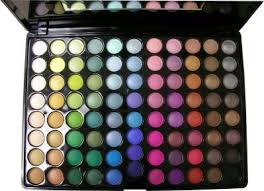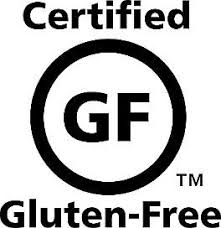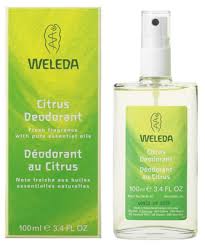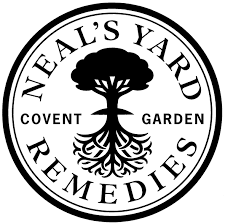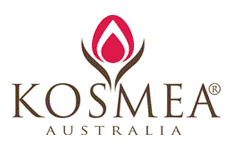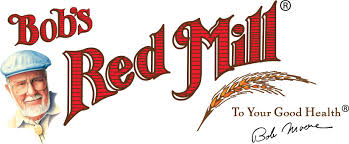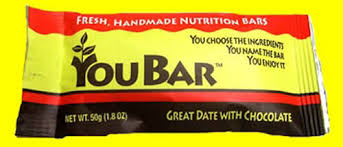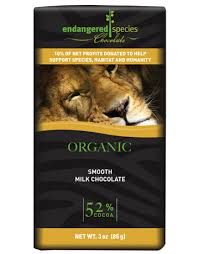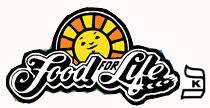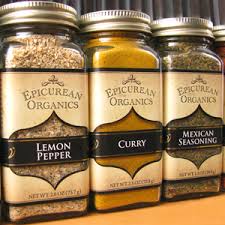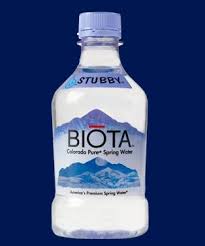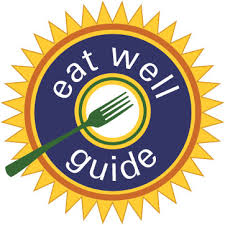 SARS virus (reelthing.com)
SARS virus (reelthing.com)Your IMMUNE SYSTEM is a bodywide network of cells, tissues and organs that has evolved to defend you against "foreign" invasions (microbes).
The Immune System
The Immune System
BACTERIA are living things that are neither plants nor animals, but belong to a group all by themselves. They are very small - individually not more than one single cell - however there are normally millions of them together, for they can multiply really fast. What are bacteria?
There are approximately ten times as many bacterial cells as human cells in the human body, with large numbers of bacteria on the skin and in the digestive tract. Although the vast majority of these bacteria are rendered harmless by the protective effects of the immune system, and a few are beneficial, some are PATHOGENIC BACTERIA and cause INFECTIOUS DISEASES. Bacteria
BACTERIAL INFECTIONS have always existed, and all organisms that can become infected have learned to deal with them. Plants have primitive defenses against bacteria by producing toxic substances. Higher animals and humans fight a bacterial infection with a more specific immune system. Our Immune System vs Bacteria
What the Heck is a Virus?
First, let me tell you what a VIRUS is not. A virus is not a bacterium, nor an independently-living organism. A virus cannot survive in the absence of a living cell within which to synthesize copies of itself (replicate). Antibiotics do not harm a virus; it is for this reason that treatment for the "flu" for example, is mainly to help ease the symptoms of the illness rather than to kill the organism which causes the "flu".
Now, is there a simple explanation which can define what a virus IS? Hmmmm... that's actually a tough question. A virus is not strictly alive.. nor is it strictly dead... A virus has some fundamental information (genes made of DNA or RNA) which allows it to make copies of itself. However, the virus must be inside a living cell of some kind before the information can be used. In fact, the information won't be made available unless the virus enters a living cell. It is this entrance of a virus into a cell which is called a VIRAL INFECTION.
All viruses only exist to make more viruses. And with the possible exception of bacterial viruses which kill harmful bacteria, all viruses appear to be harmful because their replication leads to the death of the cell which the virus entered.
So far, there is not a living thing identified that doesn't have some sort of susceptibility to a particular virus. Plants, animals, bacteria - every living thing, whether multicellular or single-celled, can be infected with a virus specific for the organism.
FUNGI and YEASTS are multi-celled plants that are PARASITES. An everyday example of a fungus is mushrooms. However, the fungi that cause human disease are usually very small fungi. There are a few common human fungal conditions that are rarely harmful except for those with severely weakened immune system. Fungi and Yeasts
MOLDS are but one type of FUNGI that exist in nearly every location across the globe. The purpose of fungi is to break down organic material and recycle them for future use by plants and animals. The FAMILY OF FUNGI includes mildews, yeasts, large mushrooms, and mold. Fungi require organic materials in order to form and expand.
TOXIC MOLD can adversely affect the health of humans. The effect on humans will depend on the type of mold involved, the metabolic byproduct of the mold, as well as how much contact there is and the length of exposure, as well as the level of susceptibility of the human victim. This last factor is important for children and elderly who can be affected much more easily.
The ill effects of molds generally break down into 4 categories that include allergies, infections, irritations and toxicities. Toxic Mold
8 FOODS THAT BOOST IMMUNITY
1. VITAMIN C
Vitamin C increases the production of infection-fighting WHITE BLOOD CELLS and ANTIBODIES and increases levels of INTERFERON, the antibody that coats cell surfaces, preventing the entry of viruses. Vitamin C reduces the risk of cardiovascular disease by raising levels of HDL (good) cholesterol while lowering blood pressure and interfering with the process by which fat is converted to plaque in the arteries. As an added perk, persons whose diets are higher in vitamin C have lower rates of colon, prostate, and breast cancer.
2. VITAMIN E
Vitamin E stimulates the production of natural KILLER CELLS, those that seek out and destroy germs and cancer cells. Vitamin E enhances the production of B-CELLS, the immune cells that produce antibodies that destroy bacteria. Vitamin E supplementation may also reverse some of the decline in immune response commonly seen in aging. Vitamin E has been implicated in lowering the risk of cardiovascular disease. In the Harvard School of Public Health study of 87,000 nurses, Vitamin E supplementation was shown to cut the risk of heart attacks by fifty percent.
3. CAROTENOIDS
BETA CAROTENE increases the number of infection-fighting cells, natural killer cells, and helper T-CELLS, as well as being a powerful ANTIOXIDANT that mops up excess FREE RADICALS that accelerate aging. Like the other "big three" antioxidants, vitamins C and E, it reduces the risk of cardiovascular disease by interfering with how the fats and cholesterol in the bloodstream OXIDIZE to form arterial plaques. Studies have shown that beta carotene can lower the risk of cardiovascular disease, especially strokes and heart attacks, giving scientific credence to the belief that a carrot a day can keep the heart surgeon away. Beta carotene also protects against cancer by stimulating the immune cells called MACROPHAGES to produce tumor necrosis factor, which kills cancer cells. It has also been shown that beta carotene supplements can increase the production of T-cell LYMPHOCYTES and natural killer cells and can enhance the ability of the natural killer cells to attack cancer cells.
The body converts beta carotene to VITAMIN A, which itself has anticancer properties and immune-boosting functions. But too much vitamin A can be toxic to the body, so it's better to get extra beta carotene from foods and let the body naturally regulate how much of this precursor is converted to the immune-fighting vitamin A. It's highly unlikely that a person could take in enough beta carotene to produce a toxic amount of vitamin A, because when the body has enough vitamin A, it stops making it.
4. BIOFLAVENOIDS
A group of PHYTONUTRIENTS called bioflavenoids aids the immune system by protecting the cells of the body against environmental pollutants. Bioflavenoids protect the cell membranes against the pollutants trying to attach to them. Along the membrane of each cell there are microscopic parking spaces, called RECEPTOR SITES. Pollutants, toxins, or germs can park here and gradually eat their way into the membrane of the cell, but when bioflavenoids fill up these parking spots there is no room for toxins to park. Bioflavenoids also reduce the cholesterol's ability to form plaques in arteries and lessen the formation of microscopic clots inside arteries, which can lead to heart attack and stroke. Studies have shown that people who eat the most bioflavenoids have less cardiovascular disease. A diet that contains a wide variety of fruits and vegetables, at least six servings per day, will help you get the bioflavenoids needed to help your immune system work in top form.
5. ZINC
This valuable MINERAL increases the production of white blood cells that fight infection and helps them fight more aggressively. It also increases killer cells that fight against cancer and helps white cells release more antibodies. Zinc supplements have been shown to slow the growth of cancer.
A word of caution: too much zinc in the form of supplements (more than 75 milligrams a day) can inhibit immune function. It's safest to stick to getting zinc from your diet and aim for 15 to 25 milligrams a day.
6. GARLIC
This flavorful member of the ONION FAMILY is a powerful immune booster that stimulates the multiplication of infection-fighting white cells, boosts natural killer cell activity, and increases the efficiency of antibody production. The immune-boosting properties of garlic seem to be due to its SULFUR-CONTAINING COMPOUNDS, such as ALLICIN and SULFIDES. Garlic can also act as an antioxidant that reduces the build-up of free radicals in the bloodstream. Garlic may protect against cancer, though the evidence is controversial. Cultures with a garlic-rich diet have a lower incidence of intestinal cancer. Garlic may also play a part in getting rid of potential carcinogens and other toxic substances. It is also a heart-friendly food since it keeps PLATELETS from sticking together and clogging tiny blood vessels.
7. SELENIUM
This MINERAL increases natural killer cells and mobilizes cancer-fighting cells. Best food sources of selenium are tuna, red snapper, lobster, shrimp, whole grains, vegetables (depending on the selenium content of the soil they're grown in), brown rice, egg yolks, cottage cheese, chicken (white meat), sunflower seeds, garlic, Brazil nuts, and lamb chops.
8. OMEGA-3 FATTY ACIDS
A study found that children taking a half teaspoon of FLAX OIL a day experienced fewer and less severe RESPIRATORY INFECTIONS and fewer days of being absent from school. The omega-3 fatty acids in flax oil and FATTY FISH (such as salmon, tuna, and mackerel) act as immune boosters by increasing the activity of PHAGOCYTES, the white blood cells that eat up bacteria. (Perhaps this is why grandmothers used to insist on a daily dose of unpalatable cod liver oil.) ESSENTIAL FATTY ACIDS (EFAs) also protect the body against damage from over-reactions to infection. When taking essential fatty acid supplements, such as flax or fish oils, take additional VITAMIN E, which acts together with essential fatty acids to boost the immune system. One way to get more omega-3 fatty acids in your diet is to add one to three teaspoons of flax oil to a fruit and yogurt smoothie.
4 HABITS THAT WEAKEN THE IMMUNE SYSTEM
1. OVERDOSING ON SUGAR
Eating or drinking 100 grams (8 tbsp.) of sugar, the equivalent of about two cans of soda, can reduce the ability of white blood cells to kill germs by forty percent. The immune-suppressing effect of sugar starts less than thirty minutes after ingestion and may last for five hours. In contrast, the ingestion of COMPLEX CARBOHYDRATES, or STARCHES, has no effect on the immune system.
2. EXCESS ALCOHOL
Excessive alcohol intake can harm the body's immune system in two ways. First, it produces an overall NUTRITIONAL DEFICIENCY, depriving the body of valuable immune- boosting nutrients. Second, alcohol, like sugar, consumed in excess can reduce the ability of white cells to kill germs. High doses of alcohol suppress the ability of the white blood cells to multiply, inhibit the action of killer white cells on cancer cells, and lessen the ability of macrophages to produce tumor necrosis factors. ONE DRINK (the equivalent of 12 ounces of beer, 5 ounces of wine, or 1 ounces of hard liquor) does not appear to bother the immune system, but THREE OR MORE drinks do. Damage to the immune system increases in proportion to the quantity of alcohol consumed. Amounts of alcohol that are enough to cause intoxication are also enough to suppress immunity.
3. FOOD ALLERGENS
Due to a GENETIC quirk, some divisions of the immune army recognize an otherwise harmless substance (such as milk) as a foreign invader and attack it, causing an allergic reaction. Before the battle, the intestinal lining was like a wall impenetrable to foreign invaders. After many encounters with food allergens, the wall is damaged, enabling invaders and other potentially toxic substances in the food to get into the bloodstream and make the body feel miserable. This condition is known as the LEAKY GUT SYNDROME.
4. TOO MUCH FAT
Obesity can lead to a depressed immune system. It can affect the ability of white blood cells to multiply, produce antibodies, and rush to the site of an infection.
Feeding Your Immune System












